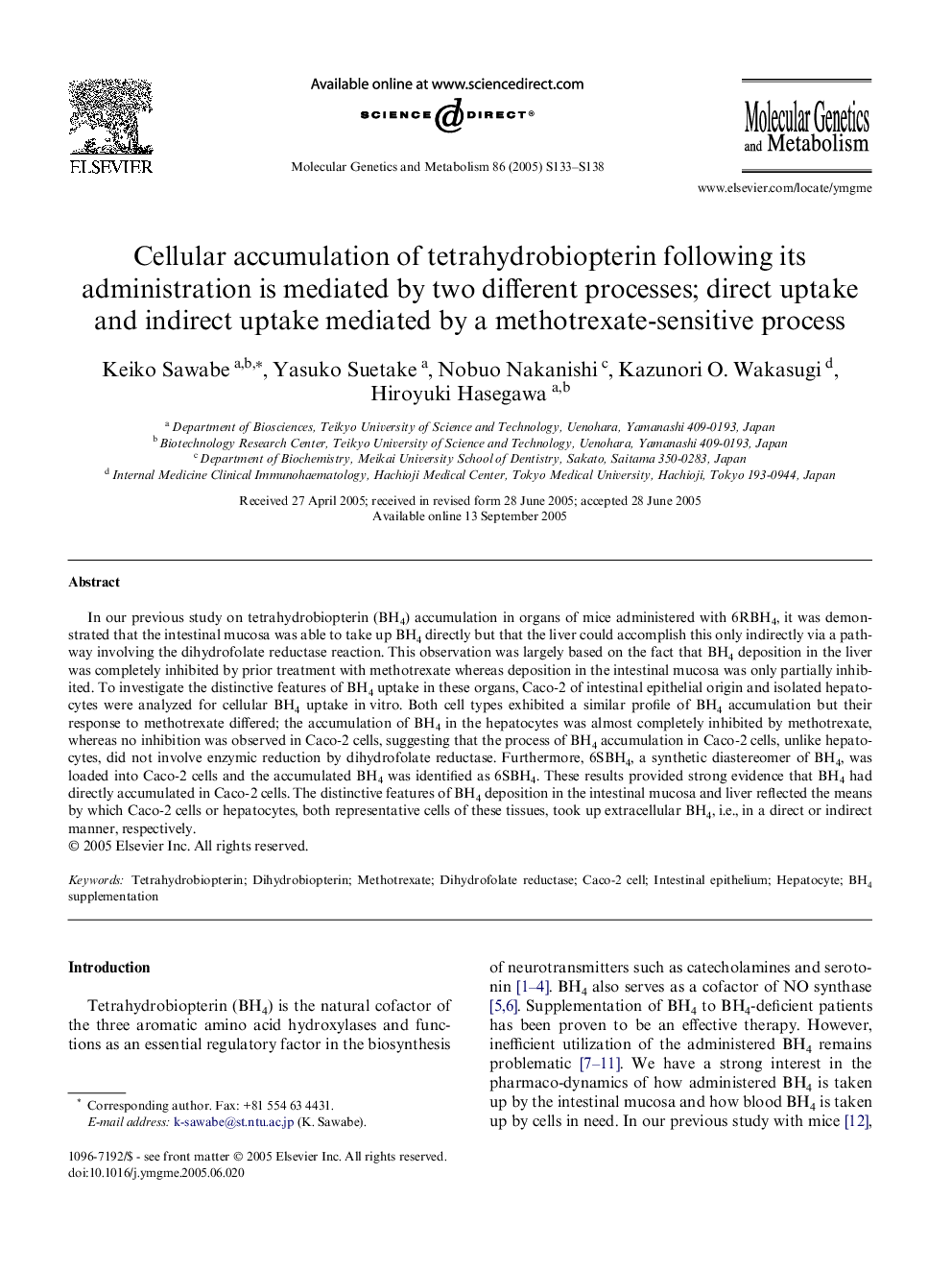| Article ID | Journal | Published Year | Pages | File Type |
|---|---|---|---|---|
| 10834055 | Molecular Genetics and Metabolism | 2005 | 6 Pages |
Abstract
In our previous study on tetrahydrobiopterin (BH4) accumulation in organs of mice administered with 6RBH4, it was demonstrated that the intestinal mucosa was able to take up BH4 directly but that the liver could accomplish this only indirectly via a pathway involving the dihydrofolate reductase reaction. This observation was largely based on the fact that BH4 deposition in the liver was completely inhibited by prior treatment with methotrexate whereas deposition in the intestinal mucosa was only partially inhibited. To investigate the distinctive features of BH4 uptake in these organs, Caco-2 of intestinal epithelial origin and isolated hepatocytes were analyzed for cellular BH4 uptake in vitro. Both cell types exhibited a similar profile of BH4 accumulation but their response to methotrexate differed; the accumulation of BH4 in the hepatocytes was almost completely inhibited by methotrexate, whereas no inhibition was observed in Caco-2 cells, suggesting that the process of BH4 accumulation in Caco-2 cells, unlike hepatocytes, did not involve enzymic reduction by dihydrofolate reductase. Furthermore, 6SBH4, a synthetic diastereomer of BH4, was loaded into Caco-2 cells and the accumulated BH4 was identified as 6SBH4. These results provided strong evidence that BH4 had directly accumulated in Caco-2 cells. The distinctive features of BH4 deposition in the intestinal mucosa and liver reflected the means by which Caco-2 cells or hepatocytes, both representative cells of these tissues, took up extracellular BH4, i.e., in a direct or indirect manner, respectively.
Keywords
Related Topics
Life Sciences
Biochemistry, Genetics and Molecular Biology
Biochemistry
Authors
Keiko Sawabe, Yasuko Suetake, Nobuo Nakanishi, Kazunori O. Wakasugi, Hiroyuki Hasegawa,
